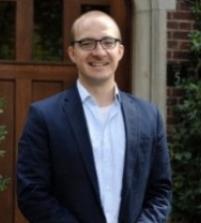I See Dead People
Body Worlds, an exhibit featuring over 200 preserved pieces of deceased human beings, opened in February at Chicago's Museum of Science and Industry
Body Worlds, an exhibit featuring over 200 preserved pieces of deceased human beings, opened in February at Chicago's Museum of Science and Industry. In addition to the sundry fragments, there are two dozen human individuals preserved whole, for the most part skinned, and arranged in a variety of athletic and fanciful poses. This blockbuster exhibit is made possible by a process called "plastination," which replaces the water and fat of human bodies with plastics, leaving intact the intricate structure of muscles, nerves, and bones.
The Museum has made scarce acknowledgement of the controversy that confronted the exhibit when it first appeared in 1997. In earlier exhibitions, it was billed as "art," while now it is presented as "science." With time and this shift in emphasis, public opposition has all but disappeared. But perhaps this whimsical display of desiccated human corpses still deserves a further measure of reflection.
The disposal of human bodies is often fraught with religious or, in our fuzzy contemporary terms, at least "spiritual" significance. Religion is preoccupied with death, and the dead bodies of others are the surest locations for the living to deal with it. Even those who deny any postmortem significance for the body tend to acknowledge the wishes of others, and proclaim their desires for the disposal of their own bodies, nowadays empowered by a wide array of options. Those wishing to plan ahead or provide for a loved one have a bewildering set of choices to make about caskets, memorial services, "memory tables," and interment locations. In a wildly successful effort to recoup revenue lost as more Americans began opting for cremation in the 1970s, the undertaking industry has managed to give consumers every chance to make even the simplest of options as expensive as possible -- for example, personalizing urns in a variety of shapes and sizes with engravings and adornment.
The proliferation of options has a lot to do with the preoccupation all of us have with our own bodies and our own deaths, the preoccupation that led humankind to turn to religion to address this issue in the first place. Confronted with the disposal of others' dead bodies, we know that our own bodies, too, will in their turn be disposed of. This same identification with the dead is at work in Body Worlds and is, indeed, forcefully encouraged by its promoters. The language used to describe the educational value of the exhibit is almost exclusively first-person plural -- the bodies allow "us" to see how "we" are put together.
The Chicago Tribune glommed on to this language, proclaiming in a fawning review of the exhibition that "we're pretty cool." This language is not universalizing so much as internalizing -- the intent is to elide the individuality of a body in the exhibit, not by making it generically "somebody," but by making it particularly me. I am instructed to view that skinless web of veins and tendons not merely as a human face, nor even as that dead man's face, but rather as my face.
But it is not my face. In life, the organs of this man's face were his primary point of interaction with the rest of the world, that from which he evaluated his surroundings and went beyond the now desiccated body to make his thoughts and desires known to others. His mouth has been reduced to a static bit of muscle and bone, but we can imagine it moving through space, chewing the food that he enjoyed, whispering to a lover.
The widespread acceptance of Body Worlds is either violently a-religious -- at once a stark humanist proclamation of our own wonders and a rejection of extra-individual considerations in the treatment of our selves in death -- or oddly indicative of a religious sensibility: an acceptance that whatever, whoever, it was that possessed that jaw, has given it up, leaving us free to use it. This is something that Gunther von Hagens, the doctor behind the exhibit, gestures toward in his writings, suggesting that locating dignity within the soul rather than the body "is certainly an alternative for those who believe in the existence of the soul." Since a vast majority of Americans say they do believe in the soul, the perception of the body as an empty husk would seem to be at work in the public acceptance of Body Worlds.
The living people who produced the exhibit would have us accept -- and many appear to have accepted -- that our use of that body is no more strange than using any other possession of a person who has died; ogling a dead body is to be as banal as wearing someone else's old sweater, or sitting in an inherited chair. In my experience, though, even such things as these feel strange and vaguely profane.
Seth Perry is a Ph.D. student in the History of Christianity at the University of Chicago Divinity School.


